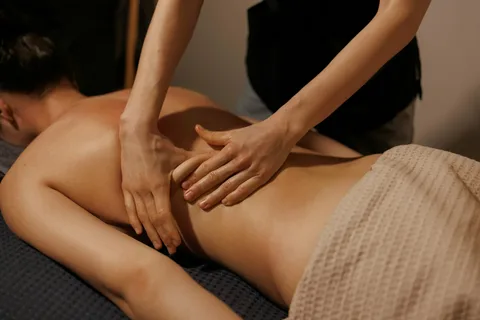The sole foot may look simple from the outside, but for anyone who walks, runs, lifts, or plays sports, it’s one of the most complex and hardworking structures in the body. As a sports massage therapist, I’ve seen how easily this area can be overlooked until discomfort shows up and performance drops. In this article, I’ll break down what the sole foot truly is, why it matters, and how proper care can make a noticeable difference in daily movement and athletic activity.
What Exactly Is the Sole Foot?
The sole foot refers to the entire underside of the foot, stretching from the heel to the toes. It’s made of layers of muscles, fat pads, fascia, nerves, and connective tissues that work together to support balance, absorb impact, and help you push off with every step. When any part of this structure becomes tight, irritated, or overworked, the whole body can feel the effect from the ankles to the lower back.
Many people don’t realize how much responsibility this small surface area carries. For athletes, runners, and fitness enthusiasts, the pressure it manages increases dramatically. This is why understanding the sole foot isn’t just useful it is essential.
Why the Sole Foot Matters for Movement and Performance
The sole foot acts like the base of operations for your body’s movement chain. It absorbs shock, stabilizes posture, and helps you maintain control during sports or high-intensity activity. If stress builds up here, your stepping pattern can change without you noticing. That small shift eventually affects your knees, hips, and even breathing rhythm when running.
When I work with clients as a sports massage therapist, I often see that many performance issues trace back to tension or weakness in the sole. You don’t need to be an athlete to feel the consequences daily standing, walking, and even sitting for long hours can strain this area.
Common Problems That Affect the Sole Foot
Common sole foot problems such as plantar fasciitis and arch pain and learn how early care and massage support comfort and healthy movement.
Plantar Fasciitis
One of the most common issues I treat is plantar fasciitis, which causes sharp heel pain caused by irritation in the fascia running across the sole foot. It usually starts with mild tightness and becomes more intense if ignored.
Tight Arch Muscles
The small muscles that support the arch often tighten when the foot lacks stability or when someone wears unsupportive shoes. The tension can feel like dull aching or burning.
Impact Stress From Sports
Sports requiring running, jumping, or sudden direction changes place repetitive impact on the sole. Without proper recovery, the tissues get overworked.
Deep Fat Pad Compression
The natural cushioning under the heel can compress over time, leading to soreness when stepping on hard surfaces.
Each of these issues responds well to early care and targeted massage techniques.
How a Sports Massage Therapist Helps the Sole Foot
Sports massage isn’t just for injured athletes it’s preventive, restorative, and performance-boosting. When I work on the sole foot, the goal is to reduce tension, restore mobility, and bring back natural strength.
Manual Release Techniques
Gentle but precise pressure helps loosen the fascia and deeper muscles. This improves circulation and reduces stiffness.
Trigger Point Work
Small knots in the foot can disrupt movement. Trigger point release helps calm these hyper-tight spots.
Stretch-Assisted Mobilization
Guided stretches help lengthen the tissues of the sole without overstressing them.
Functional Strength Suggestions
Supporting muscles around the ankles, calf, and sole foot need attention for long-term relief. Simple exercises can rebuild stability.
Consistent care from a sports massage therapist can prevent recurring foot issues and enhance overall movement efficiency.
How to Care for Your Sole Foot at Home
While hands-on therapy provides targeted benefits, there are simple habits you can adopt daily to support your feet.
Stretch the Fascia
Roll a small ball under your arch for a minute each day. It wakes up the tissues and eases mild tightness.
Strengthen the Toes
Toe-grip exercises help activate the small muscles that support the sole.
Choose Shoes Wisely
Opt for footwear that matches your foot’s natural shape and provides sufficient cushioning.
Warm Up Before Activity
Light movement for the ankles and calves prepares the sole for impact, reducing strain during exercise.
Ice After Intense Workouts
If you feel inflammation, a short icing session can calm it and prevent swelling.
These steps may seem minor, but together they make a powerful difference.
Why Athletes Should Prioritize Sole Foot Health
Athletes often push their bodies to the limit. The sole foot takes the majority of that load, especially in sports like running, soccer, basketball, dance, or CrossFit. When neglected, it becomes the first point of breakdown. When cared for properly, it becomes the foundation for explosive movement.
A healthy sole foot improves balance, speed, and stability. It also lowers the risk of ankle injuries and knee strain. Many clients notice improved performance within weeks once they begin consistent foot-focused care and sports massage sessions.
Final Thoughts
Your feet carry you through every step, workout, and long day. The sole foot may be small, but its impact on your overall well-being is massive. Understanding it, taking care of it, and seeking support from a knowledgeable sports massage therapist can help you stay active, pain-free, and confident in your movement.
Supporting your sole is one of the smartest steps you can take whether you’re an athlete looking for better performance or simply someone who wants to move comfortably through daily life.




